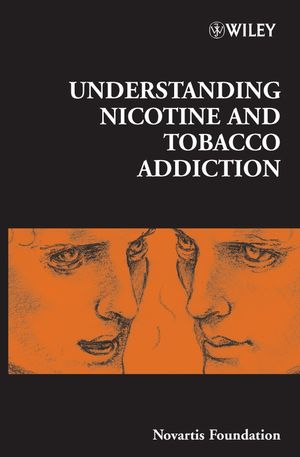Understanding Nicotine and Tobacco AddictionISBN: 978-0-470-01657-2
Hardcover
284 pages
May 2006
 |
||||||
Cigarette smoking is estimated to lead to 4.9 million premature
deaths per year worldwide. This is predicted to rise to 10 million
by 2020. In western countries it kills half of all smokers who fail
to stop.
The prevailing model for tobacco addiction is that nicotine from cigarettes rewards smoking and punishes abstinence, tapping into a motivational system of operant conditioning that requires no conscious awareness. However, there are also accounts which involve cognitive biases and the effect of nicotine on impulse control. The brain pathways involved have been studied extensively, but the role of different nicotine receptor subtypes and other neurotransmitter systems is still subject to debate.
In western countries, cigarette smoking as an adult has a heritability of 30-50% and candidate genes have been identified that may contribute in part to addiction susceptibility. Many socio-cultural correlates of cigarette smoking have been established, but a comprehensive model that accounts for these and links them with the psychobiological aspects of nicotine addiction has not been forthcoming. Structured behavioural support programmes aid cessation attempts, as do a number of pharmacotherapies, most notably nicotine replacement treatments and bupropion, but the underlying mechanisms are unclear.
This book deals with the problems involved in understanding and treating nicotine and tobacco addiction. Topics covered include the nature of the worldwide health problem posed by cigarette smoking, the psychodynamics of cigarette addiction, and the basic pharmacology and biochemistry of nicotine and its effect on the brain. Further chapters analyse the genetic basis of susceptibility to nicotine addiction. Finally, the contributors address approaches to therapy. A continuing theme in the discussions throughout the book is how best to treat nicotine addiction, given that many smokers would like to stop smoking but are unable to do so because of their addiction.
This book will be of great value to all psychologists and psychiatrists working on addiction, specifically to nicotine but also to other compounds and behaviours. It will also be of interest to neuroscientists and pharmacologists working on nicotine receptors and the brain pathways involved in dependence, as well as to biochemists, molecular biologist and to public health officials.
The prevailing model for tobacco addiction is that nicotine from cigarettes rewards smoking and punishes abstinence, tapping into a motivational system of operant conditioning that requires no conscious awareness. However, there are also accounts which involve cognitive biases and the effect of nicotine on impulse control. The brain pathways involved have been studied extensively, but the role of different nicotine receptor subtypes and other neurotransmitter systems is still subject to debate.
In western countries, cigarette smoking as an adult has a heritability of 30-50% and candidate genes have been identified that may contribute in part to addiction susceptibility. Many socio-cultural correlates of cigarette smoking have been established, but a comprehensive model that accounts for these and links them with the psychobiological aspects of nicotine addiction has not been forthcoming. Structured behavioural support programmes aid cessation attempts, as do a number of pharmacotherapies, most notably nicotine replacement treatments and bupropion, but the underlying mechanisms are unclear.
This book deals with the problems involved in understanding and treating nicotine and tobacco addiction. Topics covered include the nature of the worldwide health problem posed by cigarette smoking, the psychodynamics of cigarette addiction, and the basic pharmacology and biochemistry of nicotine and its effect on the brain. Further chapters analyse the genetic basis of susceptibility to nicotine addiction. Finally, the contributors address approaches to therapy. A continuing theme in the discussions throughout the book is how best to treat nicotine addiction, given that many smokers would like to stop smoking but are unable to do so because of their addiction.
This book will be of great value to all psychologists and psychiatrists working on addiction, specifically to nicotine but also to other compounds and behaviours. It will also be of interest to neuroscientists and pharmacologists working on nicotine receptors and the brain pathways involved in dependence, as well as to biochemists, molecular biologist and to public health officials.



